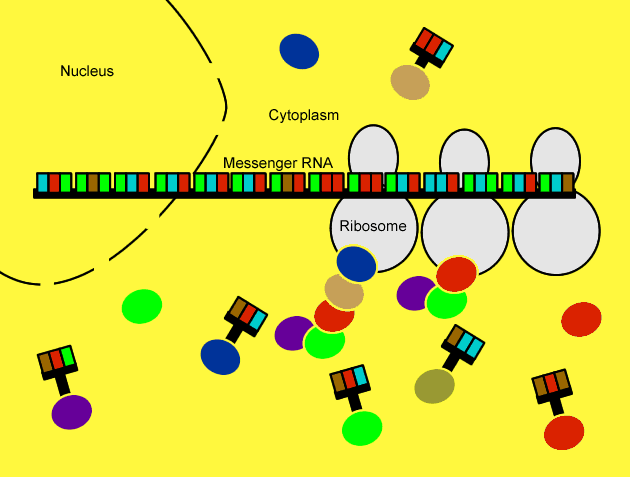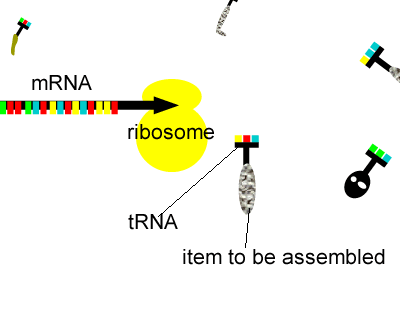Protein synthesis
translation of mRNA

Click to view another animation of the process of translation.
Once a copy of the required gene is formed, the messenger RNA(mRNA) travels out through pores in the nuclear membrane through the cytoplasm where it attaches itself to a ribosome. A template is now formed for the formation of a specific protein.
Smaller RNA molecules called transfer RNA(tRNA) pick up amino acids that float around in the cytoplasm. Each tRNA has a specific amino acid which it binds to and also has a specific triplicate base code on its surface. If the triplicate base code on the tRNA matches the codon of the mRNA, currently passing through the ribosome, a chemical bond takes place. The amino acid that is carried by the tRNA now bonds to adjacent amino acids to form the long protein chain.
See the animation above. Red represents adenine, blue represents uracil, green represents guanine and brown represents cytosine.
